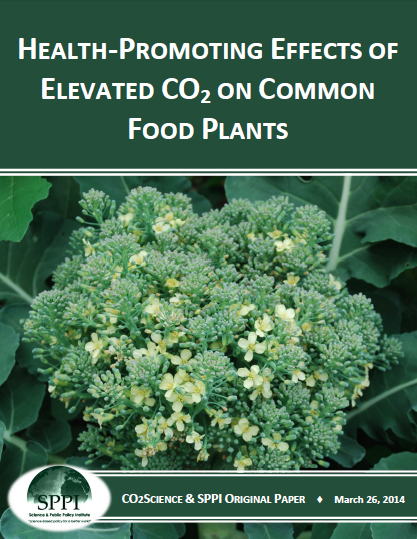News / Science & Technology
Health Promoting Effects of Elevated C02 on Common Food Plants

How will the ongoing rise in the air's CO2 content alter the amounts of various health promoting substances found in the plants that we commonly eat? Studies of the effects of atmospheric CO2 enrichment on the quality of the different plants that comprise our diets have typically lagged far behind studies designed to assess the effects of elevated CO2 on the quantity of plant production. Some noteworthy exceptions were the early studies of Barbale (1970) and Madsen (1971, 1975), who discovered that increasing the air's CO2 content produced a modest increase in the vitamin C concentration of tomatoes, while Kimball and Mitchell (1981) demonstrated that enriching the air with CO2 also stimulated the tomato plant's production of vitamin A. Then, a few years later, Tajiri (1985) found that a mere one-hour-per-day doubling of the air's CO2 concentration actually doubled the vitamin C contents of bean sprouts, and that it did so over a period of only seven days.
Fast-forwarding a couple of decades, we encounter the work of Idso et al. (2002) , who had grown well-watered and fertilized sour orange trees out-of-doors at Phoenix, Arizona, in clear-plastic-wall open-top enclosures maintained at atmospheric CO2 concentrations of either 400 or 700 ppm since November of 1987, while evaluating the effects of the extra 300 ppm of CO2 on the vitamin C concentrations of fully-ripened fruit harvested over the eight-year period 1992-1999. This work revealed that in years when the production of fruit was approximately doubled by the extra CO2, the fruit produced in the two CO2 treatments were of approximately the same size; and the vitamin C concentration of the juice of the oranges grown in the CO2-enriched air was enhanced by approximately 7% above that of the juice of the ambient-treatment oranges. In years when CO2-enriched fruit air; and the vitamin C concentration of the juice of the CO2-enriched fruit rose even higher, to as much as 15% above that of the ambient-treatment fruit. On the other hand, in years when fruit numbers were less than doubled, the CO2-enriched fruit were slightly larger than the ambient-treatment fruit; and the enhancement of the vitamin C concentration of the juice of the CO2-enriched fruit was somewhat less than the base value of 7% typical of equal-size fruit.
